Exterior Lighting For Commercial Buildings
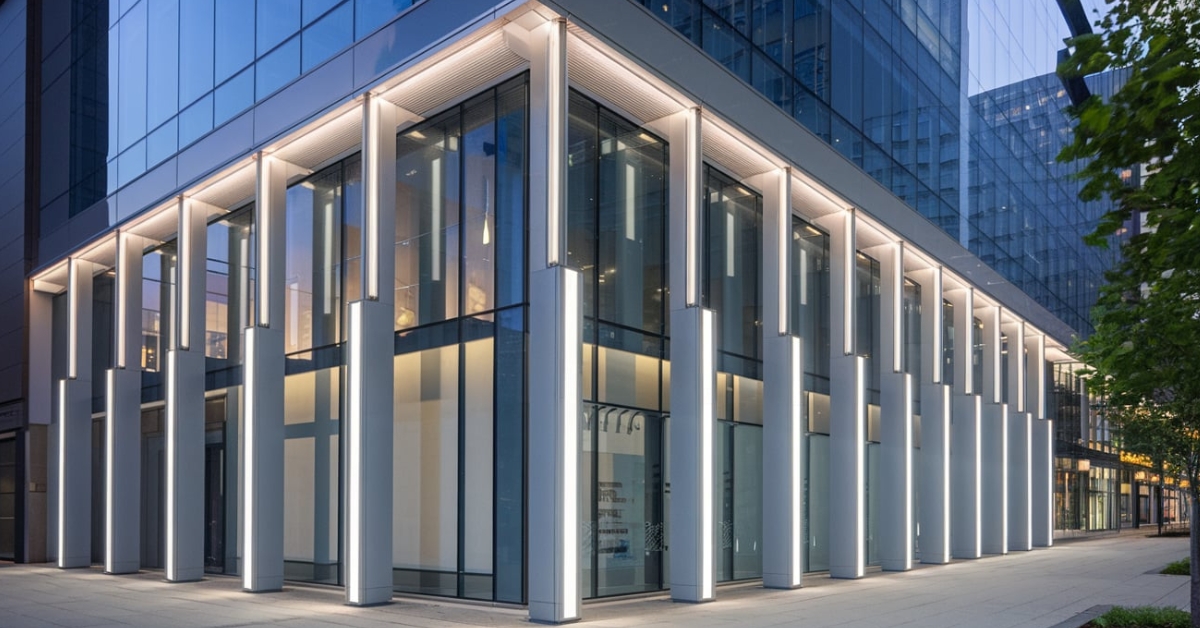
In today’s fast-paced world, commercial properties must prioritise both functionality and aesthetics. Exterior lighting plays a crucial role in enhancing the safety, security, and overall appeal of your building. From guiding visitors to making a striking first impression, the right exterior lighting can transform your commercial space. But with so many options available, where should you start?
Whether your goal is to improve security, highlight architectural features, or simply create a welcoming atmosphere for customers, exterior lighting can do wonders for your business. In this guide, we’ll explore the various types of lighting available, how to design an effective lighting plan, and how energy-efficient solutions like LED technology can lower energy costs without sacrificing quality. For more guidance on energy-efficient lighting options, check out Energy Star’s recommendations and insights from the U.S. Department of Energy.
What Is Exterior Lighting for Commercial Buildings?
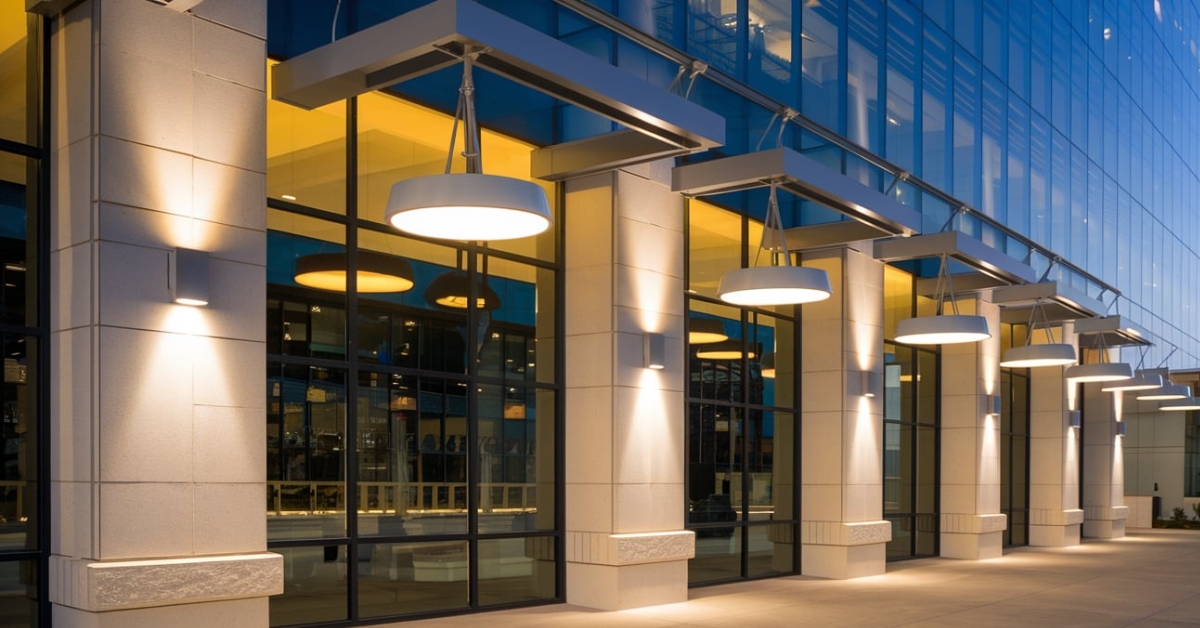
Before diving into specific lighting types and design tips, let’s clarify what exterior lighting for commercial buildings entails. Simply put, exterior lighting refers to fixtures specifically designed for outdoor use. Unlike indoor lights, these luminaires are built to withstand harsh weather conditions, including rain, snow, dust, and extreme temperatures.
Because outdoor fixtures are exposed to the elements, it's important to choose IP-rated (Ingress Protection) lights that offer protection against moisture and debris. This ensures durability and long-lasting performance. Exterior lighting also serves various purposes, from enhancing curb appeal and creating a welcoming atmosphere to ensuring the safety of employees and visitors, particularly after dark.
Certain types of exterior lighting, such as motion-sensor lights, are designed to improve security by illuminating areas when movement is detected. This feature can help deter criminal activity, making your property safer. But exterior lighting does more than just protect—it also beautifies. When thoughtfully selected and installed, these fixtures can highlight architectural features, create a cohesive look, and even guide visitors safely to your entrance. For more details on how to plan for exterior lighting, see IES Lighting Guidelines.
Starting Your Lighting Plan
The foundation of any good lighting design starts with a clear understanding of the space’s needs. What’s the primary function of your lighting—security, decoration, or practical illumination for pathways and parking areas? Once you’ve established your objectives, consider the following steps to create a successful lighting plan:
1. Define the Purpose: Are you aiming to enhance security by lighting dark areas, or are you more focused on improving aesthetics? Many businesses find it beneficial to achieve both with a mix of lighting types.
2. Align Lighting with Building Design: To maintain a professional look, ensure that your exterior lighting complements the architectural style of your building. For example, modern, minimalist designs may call for sleek, low-profile fixtures, while traditional buildings may benefit from ornate, decorative lights.
3. Layer Lighting for Effect: The best lighting designs often combine different types of lighting to achieve various effects. Consider using ambient lighting to create an inviting atmosphere, task lighting for focused illumination on pathways or entrances, and accent lighting to highlight architectural details or landscaping features.
It’s also essential to think about how exterior lighting interacts with its surroundings. For instance, lighting that is too bright may cause light pollution or create an undesirable glare, while lighting that is too dim may not serve its intended purpose. Play around with light and shadow to find a balance that works for your space. The goal is not to flood the area with light but to strategically illuminate key features while creating an inviting and secure environment.
For expert advice on outdoor lighting design, consider resources from Houzz.
Types of Exterior Lighting for Commercial Buildings
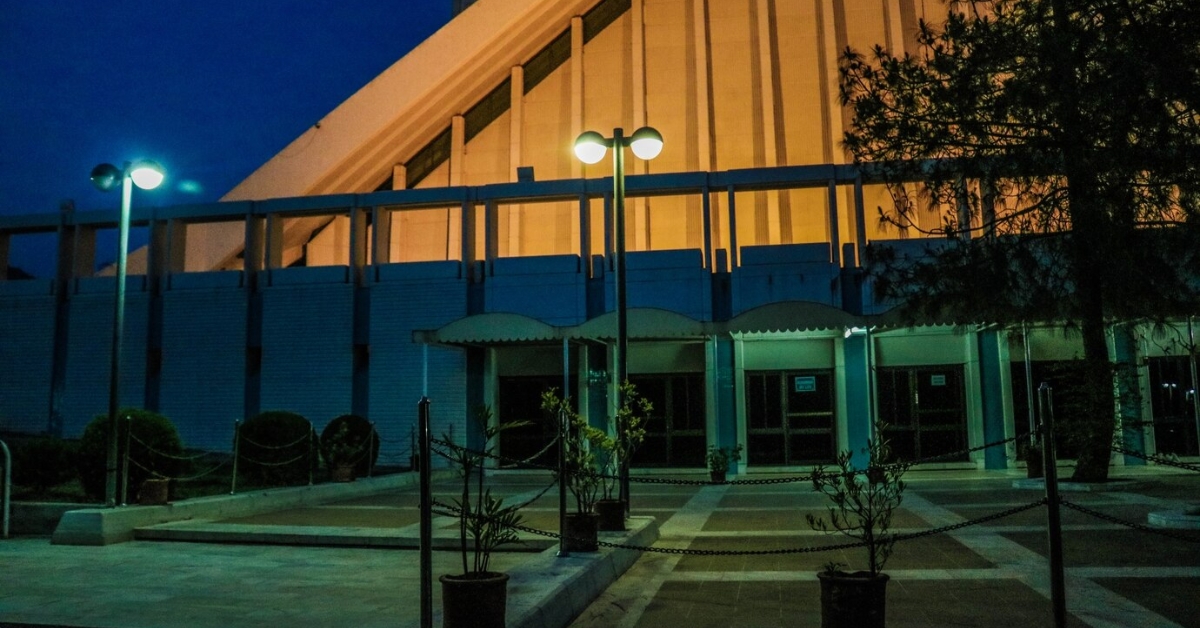
Choosing the right lighting for your commercial property can seem overwhelming with so many options on the market. However, by understanding the strengths of each type of exterior light, you can tailor a lighting plan that suits your business’s specific needs. Below are some of the most popular types of exterior lighting for commercial spaces:
1. Bollard Light Fixtures
Bollard lights are one of the most functional and versatile exterior lighting options available. Typically used to illuminate pathways and entryways, bollard lights are ideal for businesses that want to ensure safe, well-lit access to their building. These fixtures stand between two and four feet tall, making them perfect for pedestrian walkways.
Modern LED bollard lights offer an energy-efficient solution while maintaining aesthetic appeal. They are available in various shapes and designs, allowing you to customise the look to align with your brand’s style. Bollard lights are often the first point of contact a visitor will have with your building, so creating an appealing, well-lit pathway is crucial.
Keep in mind that while bollard lights provide functional illumination, they are best used in conjunction with other lighting types for a more comprehensive lighting solution. For example, consider pairing bollard lights with floodlights for added security coverage.
2. Floodlight Fixtures
When it comes to lighting large areas such as parking lots, building exteriors, or loading docks, floodlights are a must-have. These fixtures offer powerful illumination and wide coverage, ensuring your commercial space remains well-lit even in the darkest areas. In addition to enhancing visibility, floodlights are often used as a security measure, helping to deter criminal activity by eliminating potential hiding spots.
LED floodlights are a great investment for businesses looking to reduce energy consumption while maintaining bright, long-lasting light. Their adjustable beam angles make them incredibly versatile—you can direct light exactly where it’s needed, whether that’s illuminating entrances, signage, or dark corners. Floodlights can also be fitted with motion sensors for added efficiency, turning on only when needed.
To read more about the benefits of floodlighting for security and efficiency, check out Building Design + Construction’s lighting recommendations.
3. Lanterns and Wall Light Fixtures
For businesses that prefer a more traditional look, lanterns and wall-mounted lights provide a timeless, elegant solution. Often seen in residential applications, these fixtures can also be used in commercial settings to create a welcoming, understated glow. Lanterns are typically installed near entrances or along exterior walls to highlight architectural details.
Wall lights, including sconce-style fixtures, are another popular option for adding ambient lighting around a building. These lights can be customised to suit the architectural style of your property and are available in a range of finishes, from modern stainless steel to classic bronze.
Lanterns and wall lights aren’t typically used for high-intensity illumination, so they are best suited for decorative purposes or as supplemental lighting. Pair them with floodlights or ground lights to create a balanced lighting scheme.
4. Ground Lights
For a sleek, minimalist lighting option, consider ground lights. These fixtures are installed flush with the ground and offer subtle, low-level illumination that’s perfect for highlighting walkways, gardens, and entryways. Ground lights are particularly effective at creating a modern, polished look while providing functional lighting that enhances safety.
Many businesses use ground lights to highlight landscaping features or to draw attention to key architectural elements. They can also be installed along stairs or ramps to prevent trips and falls, making them both practical and visually appealing. As with all exterior lighting, choosing LED ground lights will provide greater energy efficiency and lower long-term maintenance costs.
5. Dusk-to-Dawn Light Fixtures
If you’re looking for an energy-efficient lighting option that requires minimal maintenance, dusk-to-dawn fixtures are a perfect choice. These lights are equipped with photo sensors that automatically turn the lights on at dusk and off at dawn, ensuring your building is always well-lit during nighttime hours.
LED dusk-to-dawn lights provide substantial energy savings and are ideal for businesses concerned about utility costs. These fixtures are often used in parking lots, along building perimeters, and in other areas where 24/7 lighting is required.
| Type of Exterior Lighting | Best Used For | Key Features | Benefits |
|---|---|---|---|
| Motion Sensor Lights | Security, high-traffic areas | Activates when motion is detected | Saves energy, enhances security, automatic operation |
| LED Floodlights | Large areas, parking lots, entryways | Wide coverage, adjustable brightness | Bright, durable, energy-efficient |
| Bollard Lights | Pathways, walkways, landscape design | Low-height fixtures, stylish designs | Improves safety, adds aesthetic appeal |
| Wall Lights | Building facades, entrances | Mounted on walls, ambient lighting | Enhances aesthetics, provides soft lighting |
| Ground Lights | Pathways, landscaping, steps | Recessed in the ground, discreet design | Subtle illumination, adds visual appeal |
| Dusk-to-Dawn Lights | Security, general lighting needs | Automatic on/off based on daylight | Energy-saving, no manual operation needed |
Motion Sensor Light Fixtures: The Smart Solution for Security and Efficiency
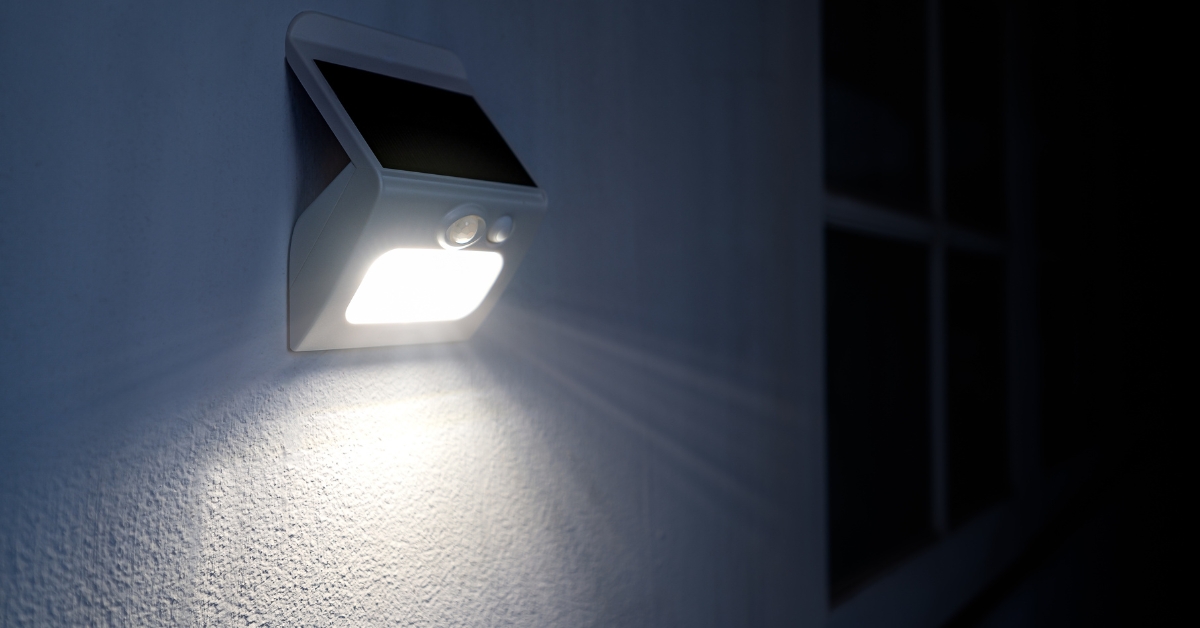
If you’re looking to add an extra layer of control to your exterior lighting, motion sensor light fixtures are a smart choice. These lights activate only when movement is detected, making them perfect for high-traffic areas like walkways, entryways, and parking lots. Not only do they provide convenience and energy savings, but they also enhance security around your commercial property.
Unlike traditional outdoor lighting that stays on continuously, motion sensor lights operate based on motion detection, ensuring that lights are used only when needed. This not only saves energy but also reduces light pollution, allowing your commercial space to remain efficient and eco-friendly.
How do motion sensors work? Each fixture contains a motion-sensing mechanism, typically an infrared beam, that detects movement from people or objects. When the sensor is triggered, the light turns on for a preset amount of time. The range and angle of detection vary depending on the fixture, so it's important to choose the right one for your specific needs.
Boost Security with Motion Sensor Lights
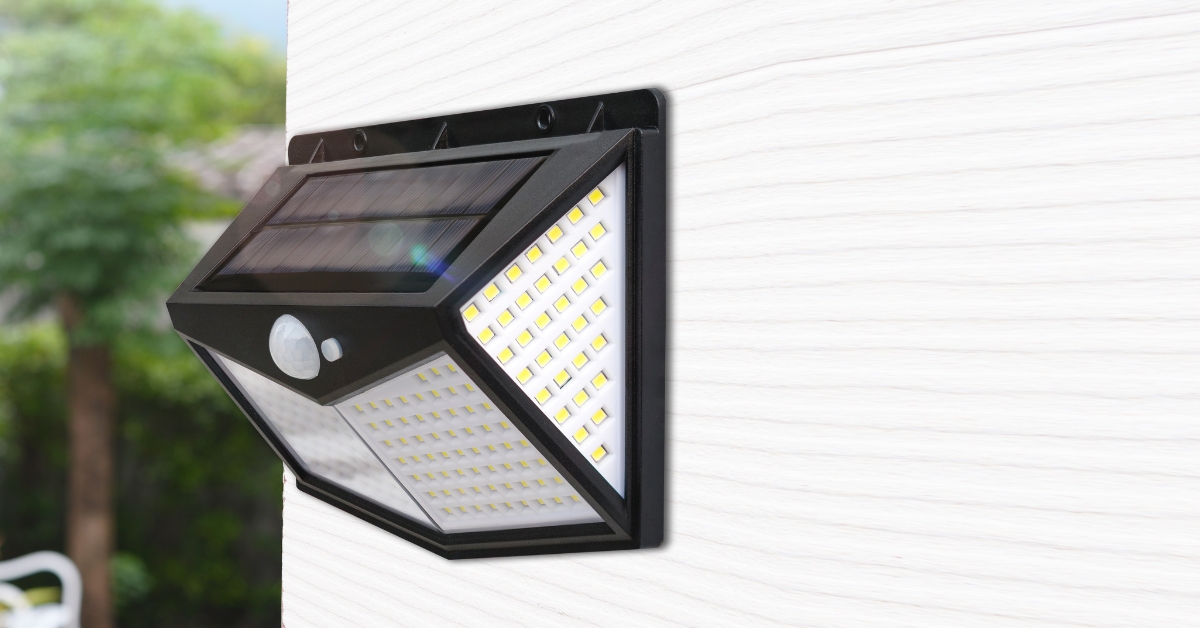
One of the biggest advantages of motion sensor lights is their ability to deter potential intruders. If someone approaches your building after hours, the lights will automatically turn on, making it much harder for criminals to go unnoticed. This feature provides peace of mind for business owners, especially when the property is unoccupied. In addition to acting as a security measure, motion sensor lights can help illuminate walkways and entrances, reducing the risk of accidents for employees and visitors alike.
Many motion sensor lights are equipped with a photocontrol or photocell that acts as a timer, allowing you to customise how long the lights stay on after activation. This feature ensures that the lights only operate for the necessary amount of time, further enhancing energy efficiency. Some motion sensors even work in conjunction with dusk-to-dawn lighting, meaning they only activate when it's dark outside, saving you from unnecessary energy costs during daylight hours.
As you explore motion sensor options, you’ll come across two main types of sensors: microwave sensors and PIR (Passive Infrared) sensors. Both have their pros and cons, but one offers a higher level of efficiency and accuracy. Let’s take a closer look at these two technologies.
Microwave Sensors: Cutting-Edge Detection for Large Properties
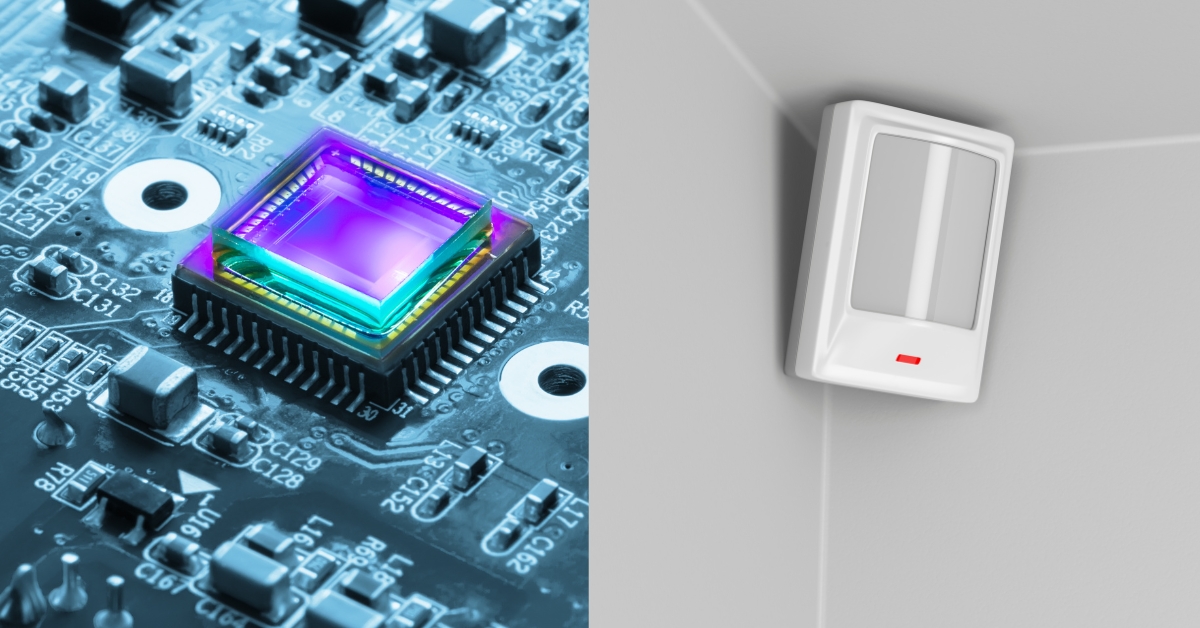
Exterior lights with microwave sensors offer superior functionality compared to traditional lighting. These sensors detect movement through walls and other obstacles, making them ideal for larger commercial properties or areas with multiple entry points. Microwave sensors emit electromagnetic waves and measure the reflections to detect movement. Because of this, they offer a wider detection range than PIR sensors, making them highly versatile for various environments.
If you have areas that are hard to reach or prone to high traffic, microwave sensor lights are a perfect fit. They are also effective in extreme temperatures, making them suitable for warehouses or industrial spaces where traditional sensors may struggle to perform efficiently.
Another key advantage of microwave sensors is their ability to filter out false alarms. Unlike other sensors that may be triggered by animals or passing vehicles, microwave sensors can be programmed to ignore such disturbances, ensuring that the lights only activate for human movement or significant activity. This precision reduces wasted energy and increases the overall efficiency of your outdoor lighting system.
Microwave sensors are also user-friendly, with easy programming options that allow you to fine-tune detection settings according to your needs. For those seeking a reliable, low-maintenance solution, microwave sensors are hard to beat.
PIR Sensors: Affordable and Effective, But with Limitations
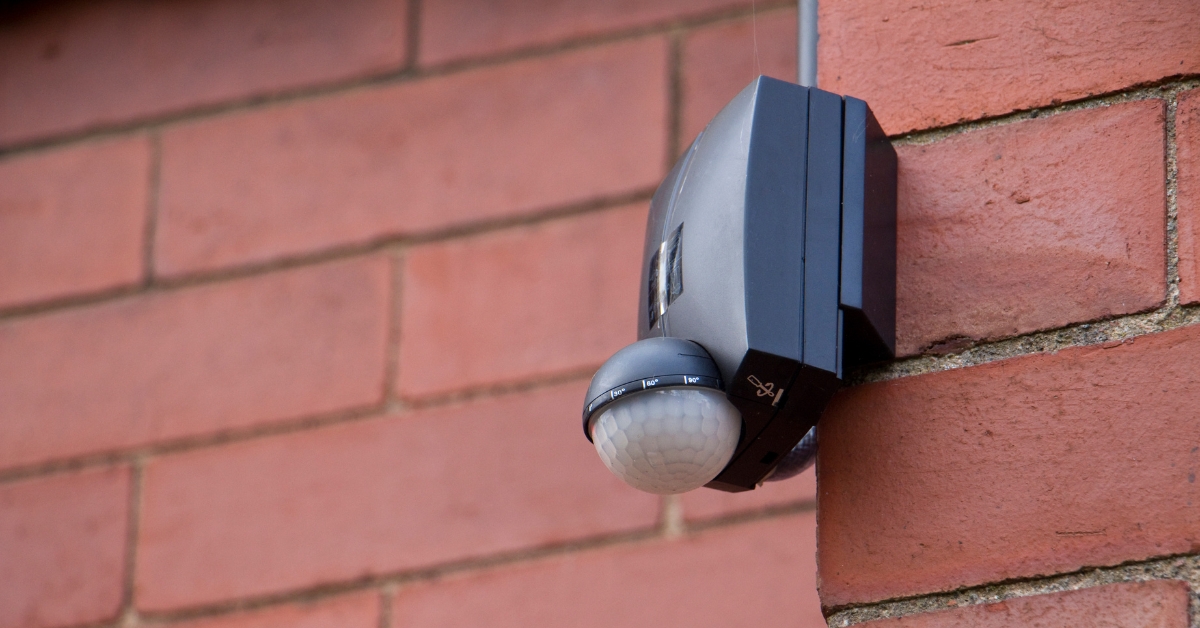
PIR (Passive Infrared) sensors are another popular option for motion sensor lighting. These fixtures detect changes in temperature, using infrared beams to monitor the ambient heat of an area. When a temperature difference is detected—such as a person walking into the sensor's range—the light is activated. PIR sensors work by sensing body heat, so they are often used in entryways or near parking lots.
While PIR sensors are cost-effective and widely available, they are not as versatile as microwave sensors. They tend to be less effective in extreme temperatures and may be more prone to false alarms, especially in environments where the temperature fluctuates frequently. Additionally, PIR sensors are sensitive to movement across the sensor's line of sight, but they may struggle to detect motion moving directly toward or away from the sensor.
Despite these limitations, PIR sensors are a solid choice for businesses looking for an affordable, easy-to-install motion-sensor lighting solution. They work well in areas with consistent temperature levels and where false alarms are less of a concern.
When deciding between microwave and PIR sensors, consider the size of your property, the environmental conditions, and your specific lighting needs. For large commercial spaces or areas with heavy foot traffic, microwave sensors will likely offer better performance. For smaller properties or locations with less frequent movement, PIR sensors may be sufficient.
Credit: ecologicaltime
Energy Efficiency: A Key Consideration for Exterior Lighting
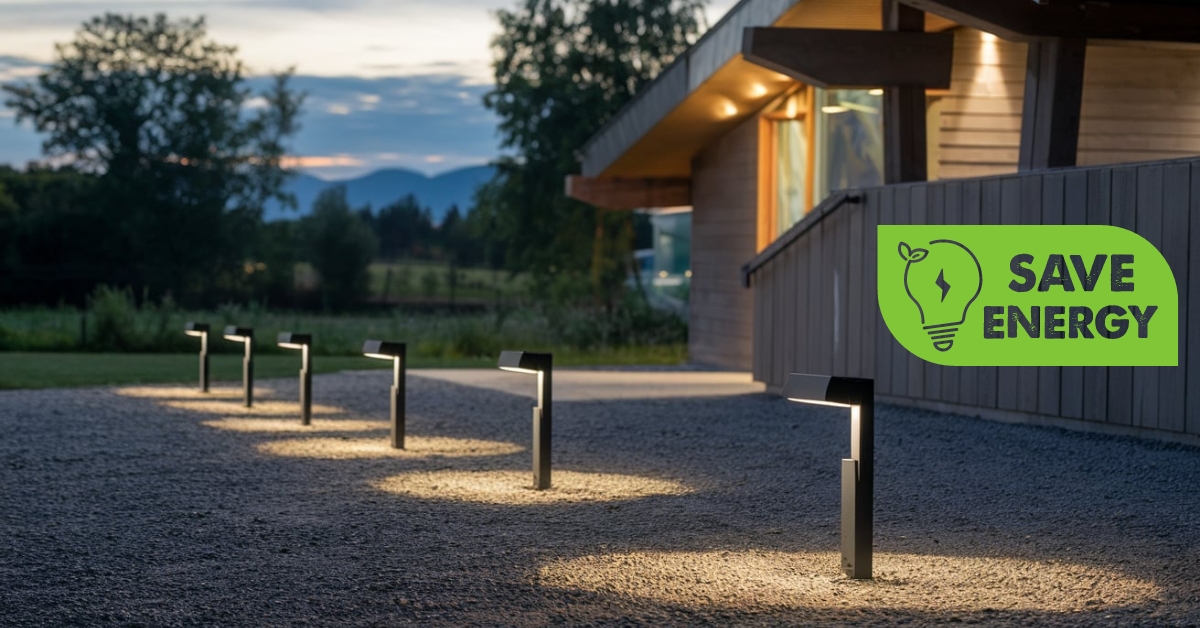
Whether you opt for motion sensor lighting or traditional fixtures, energy efficiency should always be a top priority. Exterior lighting can quickly drive up energy costs if not managed properly, which is why it's important to choose energy-saving options wherever possible. Not only do energy-efficient lights help lower your utility bills, but they also reduce your carbon footprint, making your business more sustainable.
Commercial LED Exterior Lighting: The Future of Energy Efficiency
When it comes to energy-efficient lighting, LEDs (Light Emitting Diodes) are the clear winner. These lights use up to 90% less energy than traditional incandescent or halogen bulbs, making them the ideal choice for both commercial and residential applications. The efficiency of LEDs comes from their ability to convert more electricity into light rather than heat, unlike older bulbs, which lose a significant amount of energy through heat emission.
LEDs are available in a variety of formats, including linear fluorescent lamps and strip lights, which are commonly used in commercial, industrial, and workplace settings. In addition to energy savings, LED lights have an exceptionally long lifespan. A high-quality LED bulb can last up to 25 times longer than its incandescent counterpart, reducing the need for frequent replacements and lowering maintenance costs.
Because they produce minimal heat, LEDs are also safer to use in enclosed fixtures and in areas where temperature control is important. If your goal is to reduce energy consumption while maintaining excellent brightness and quality, switching to LED exterior lighting is a smart investment
Why Choose LED Lighting?
When it comes to outdoor lighting, it’s easy to overlook how much energy your lights are actually consuming, especially if they’re on for long hours each day. However, lighting can account for a significant portion of your energy costs, which is why investing in energy-efficient lighting is essential. That’s where LED lights come in.
LED lighting isn’t just about reducing electricity bills—it’s also a more sustainable option for your business and the environment. Did you know that commercial buildings contribute around 8% of the UK’s total greenhouse gas emissions? As climate change awareness grows, more businesses are looking for ways to lower their environmental impact, and energy-efficient lighting is a great place to start.
One of the reasons LED lights are considered environmentally friendly is because they don’t contain harmful chemicals like mercury, which is often found in traditional incandescent or fluorescent bulbs. Mercury is not only hazardous to dispose of but can also contaminate the environment when bulbs break, especially affecting groundwater. LEDs, on the other hand, are completely free from toxic chemicals and are also easier to recycle.
In addition to being more sustainable, LEDs last significantly longer than traditional bulbs, meaning fewer replacements and lower maintenance costs. LED bulbs can last up to 25 times longer than their incandescent counterparts, making them a cost-effective option for businesses of any size.
If you want to reduce your energy consumption and switch to a more sustainable solution, LED lighting is the way forward. For a wide range of high-quality LED lights, check out Meteor Electrical. Our Kosnic LED range offers top-notch efficiency, durability, and illumination, helping you lower energy costs without sacrificing lighting quality. Browse the collection here.
Credit: CBS Mornings
The Benefits of Exterior Commercial Lighting
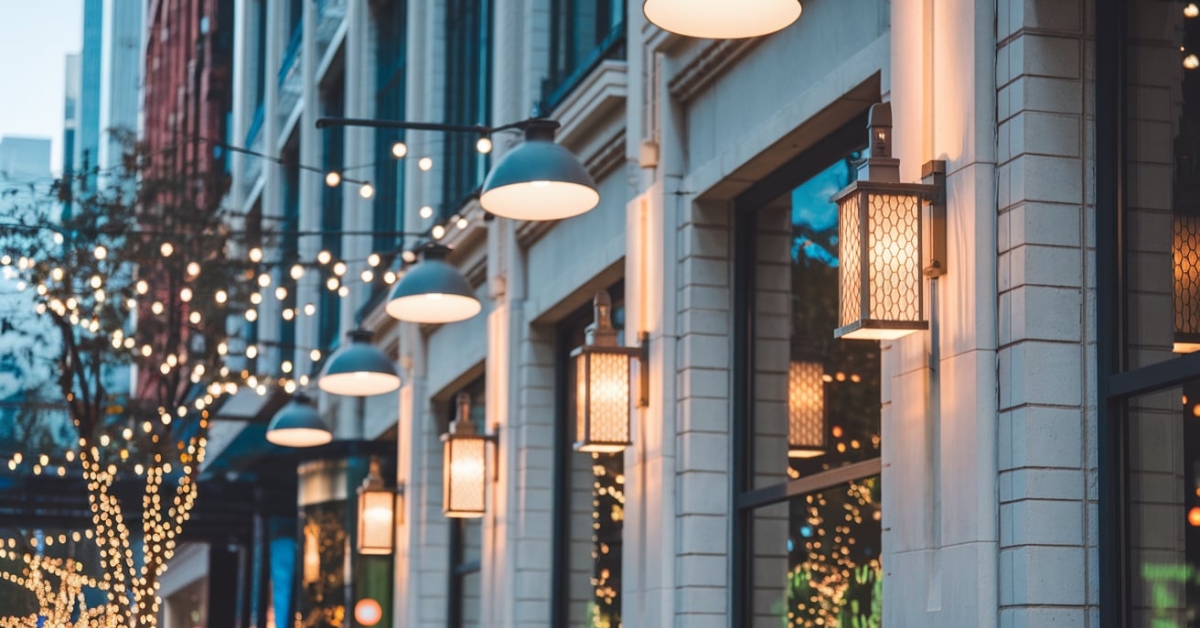
If you’re on the fence about upgrading your outdoor lighting, here are some compelling reasons to invest in exterior commercial light fixtures.
1. Improve Safety and Security
Whether you're a business owner or a property manager, protecting your premises is a top priority. Commercial outdoor lighting plays a key role in enhancing the safety and security of your property. Well-placed exterior lights eliminate dark shadows and poorly lit areas that can be attractive to potential intruders.
Bright, strategically placed lighting around entry points, walkways, and parking areas deters criminals and helps reduce the risk of burglary, vandalism, and property damage. Motion sensor lighting is particularly effective at catching unwanted activity around your property, turning on only when movement is detected.
In addition to security, outdoor lighting ensures the safety of employees, customers, or visitors. Illuminating paths, stairways, and entry points helps prevent accidents like trips or falls, creating a safer environment for everyone.
2. Enhance the Visual Appeal of Your Building
Exterior lighting isn’t just functional—it’s also a fantastic way to enhance the visual appeal of your commercial property. A well-thought-out lighting design can transform how your building looks after dark, making it more inviting and attractive to potential customers.
When a building is properly lit, it becomes more accessible. Bright, welcoming lighting creates a professional image, making visitors more likely to enter. On the other hand, poor lighting can make your property appear uninviting or even unsafe. If customers struggle to navigate poorly lit areas, they might think twice before approaching your business.
By adding the right exterior lighting fixtures, such as wall lights, floodlights, and ground lights, you can highlight key architectural features and create a more engaging, aesthetically pleasing environment. Whether you want to draw attention to your brand or simply improve the nighttime ambiance, exterior lighting can do wonders for your building’s overall appearance.
3. Boost Energy Efficiency and Reduce Costs
Switching to LED lighting for your commercial property’s exterior is one of the most effective ways to cut down on energy consumption and reduce your electricity bills. Unlike traditional bulbs, LEDs consume significantly less power while still delivering the same level of brightness. In fact, LED lights use up to 90% less energy than incandescent or halogen bulbs.
Since exterior lights are often used for long periods, especially during the night, energy-efficient LEDs can help you save money over time. By reducing your energy usage, you’re also lowering your carbon footprint, contributing to a more sustainable future. Over time, these savings add up, making LED exterior lighting a smart investment for any business.
4. Longer Lifespan and Lower Maintenance
One of the major benefits of LED lights is their impressive lifespan. Unlike traditional bulbs, which need frequent replacements, LED lights can last for up to 50,000 hours or more, depending on usage. This means fewer replacements, lower maintenance costs, and less hassle for you and your business.
For commercial properties, where lighting plays a crucial role in safety and security, investing in long-lasting lights ensures your exterior stays illuminated without constant upkeep. Additionally, LED lights are more durable and resistant to external damage, making them ideal for outdoor environments where weather conditions might otherwise affect traditional lighting options.
5. Customisable Lighting Solutions
Exterior lighting is no longer just about providing illumination—it’s also about creating the right atmosphere for your commercial space. With modern lighting solutions, such as LED floodlights, spotlights, and accent lights, you have the ability to fully customise your lighting design. Whether you want to highlight architectural features, light up signage, or create a welcoming ambiance around entrances and pathways, the versatility of LED lighting allows for full creative control.
Dimmable options, color-changing features, and programmable controls enable you to adjust the lighting to suit different events, seasons, or specific business needs. This flexibility ensures that your property remains functional and aesthetically pleasing year-round, enhancing the overall customer experience.
Illuminate Your Property with Meteor Electrical
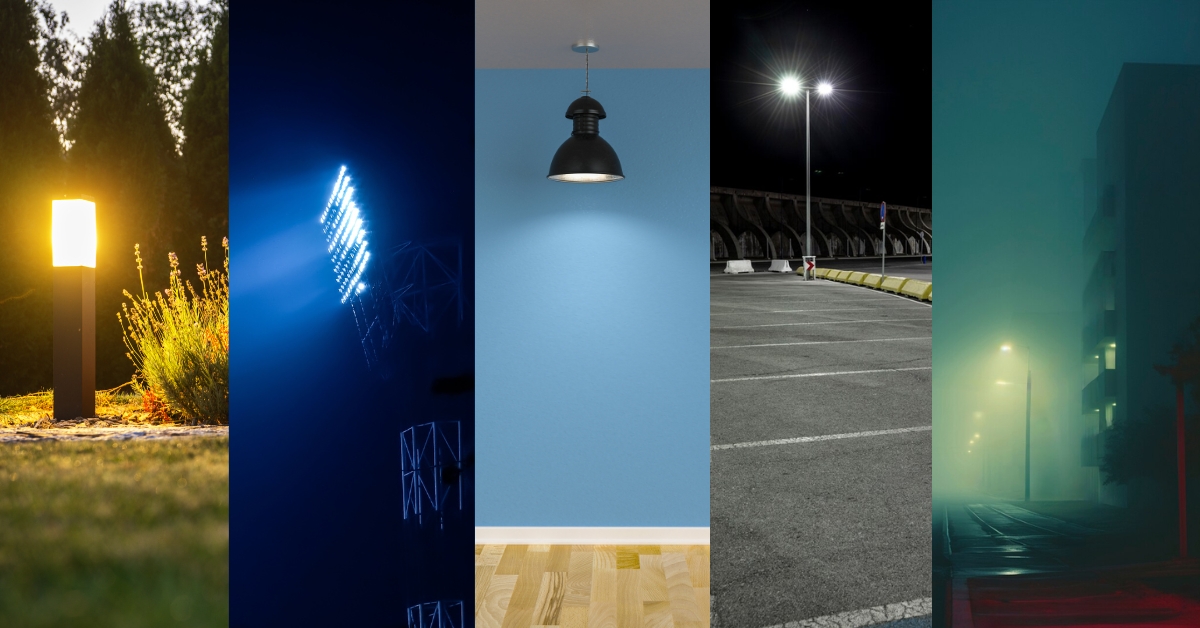
If you’re ready to take your exterior lighting to the next level, Meteor Electrical has everything you need to light up your commercial property efficiently and stylishly. From energy-saving LED solutions to high-performance outdoor lighting fixtures, we provide top-quality products that ensure safety, security, and visual appeal for your building.
At Meteor Electrical, we offer a wide selection of commercial lighting options, all designed to meet your specific needs. Whether you’re looking for motion sensor lights for added security or decorative wall lights to enhance your building’s facade, our experts can guide you through the best solutions to fit your business.
Explore our extensive range of Kosnic LED lighting products, known for their durability, efficiency, and superior performance. We’re dedicated to helping you create a well-lit, energy-efficient environment that not only saves you money but also elevates the look and feel of your property.
Visit Meteor Electrical today to browse our collection and find the perfect lighting solutions for your commercial space. Our knowledgeable team is ready to assist you in making the best choices for your exterior lighting needs. Let us help you brighten up your business with innovative, energy-efficient lighting options. Explore our products now at Meteor Electrical.
FAQs
1. What type of exterior lighting is best for security purposes?
Answer: Motion sensor lights and floodlights are ideal for security purposes. Motion sensors activate when movement is detected, while floodlights provide wide coverage, illuminating large areas like parking lots and entryways.
2. Why should I choose LED lights for my commercial building?
Answer: LED lights are energy-efficient, using up to 90% less energy than traditional bulbs. They last longer, reduce electricity bills, and are environmentally friendly due to their lower carbon footprint and absence of harmful chemicals.
3. How can exterior lighting enhance the look of my commercial property?
Answer: Thoughtfully placed exterior lights, such as accent lighting or wall lights, can highlight architectural features, create a welcoming ambiance, and improve the overall appearance of your property, making it more inviting to visitors.
4. What are the benefits of motion sensor lights?
Answer: Motion sensor lights improve security by automatically turning on when movement is detected. They are energy-efficient since they only activate when needed, reducing unnecessary lighting and energy consumption.
5. How do I choose the right exterior lighting for my business?
Answer: Consider your goals—whether it's security, aesthetics, or energy efficiency. LED floodlights work well for large spaces, while wall lights and bollards enhance pathways and entrances. Customisable options allow you to tailor lighting to your specific needs.

